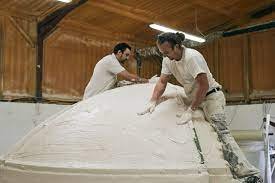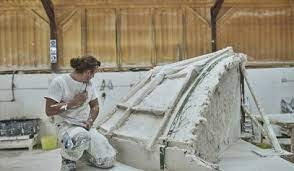Set Plasterer

In the grand orchestra of construction, where architects design, engineers calculate, and builders construct, there exists a group of artisans whose work often goes unnoticed until the final strokes of paint: set plasterers. These craftsmen wield trowels with precision, transforming raw walls into smooth, polished surfaces ready for the finishing touches. Despite their crucial role in achieving architectural perfection, set plasterers remain largely unseen, hidden behind the scenes of the construction industry. In this article, we delve into the world of set plastering, exploring the intricacies of their craft and the significance of their contribution to the built environment.
Set plastering, also known as solid plastering or hard wall plastering, is the process of applying a durable plaster mixture directly onto solid surfaces such as brick, concrete, or stone walls. Unlike drywall finishing, which involves the use of plasterboard or gypsum panels, set plastering entails building up layers of plaster on-site, creating a seamless and robust surface. This technique has been practiced for centuries, dating back to ancient civilizations where lime-based plasters were used to embellish the walls of palaces and temples.
Today, set plastering remains an essential aspect of both traditional and contemporary construction projects. From restoring heritage buildings to crafting modern interiors, set plasterers play a pivotal role in achieving architectural integrity and aesthetic excellence. Their work encompasses a range of techniques, including rendering, floating, and skimming, each tailored to the specific requirements of the project.
Rendering is the initial stage of set plastering, where a base coat of plaster is applied to the substrate to create a level surface. This coat may incorporate additives such as sand or fibers to enhance strength and adhesion. Skilled set plasterers meticulously spread the plaster mixture, ensuring uniform coverage and smoothness across the wall. Once the rendering is complete, the surface is left to cure before proceeding to the next stage.
Floating is the process of refining the surface texture and removing imperfections from the rendered plaster. Using a wooden float or trowel, set plasterers work the plaster in circular or sweeping motions, smoothing out any bumps or irregularities. This stage requires finesse and attention to detail, as it sets the foundation for the final finish.
Skimming is the final layer of plaster applied to achieve a flawless, polished surface. Set plasterers carefully spread a thin coat of finishing plaster over the floated surface, using long, sweeping strokes to achieve a uniform appearance. This coat is meticulously smoothed and leveled, creating a seamless canvas for paint or decorative finishes.
The artistry of set plastering lies not only in the technical proficiency of the craftsmen but also in their ability to adapt to diverse architectural styles and design preferences. Whether replicating the intricate moldings of neoclassical interiors or executing the clean lines of minimalist spaces, set plasterers possess a keen understanding of proportion, texture, and symmetry. Their work often serves as the backdrop for the architectural narrative, enhancing the visual impact of a space while providing a sense of cohesion and refinement.
Despite its importance, set plastering is often overshadowed by other trades within the construction industry. Unlike carpentry or masonry, which garner more attention for their visible structures and finishes, set plastering operates in the background, quietly shaping the aesthetic quality of a building. However, this lack of visibility does not diminish the significance of their role; rather, it underscores the understated nature of their craftsmanship.
In recent years, there has been a resurgence of interest in traditional building techniques and artisanal craftsmanship, prompting renewed appreciation for the skills of set plasterers. Architects and designers are increasingly incorporating handcrafted plaster finishes into their projects, drawn to the timeless elegance and tactile richness they impart. This renewed focus on authenticity and quality has created opportunities for set plasterers to showcase their expertise and elevate their craft to new heights.
Moreover, advancements in materials and technology have expanded the possibilities of set plastering, allowing for greater durability, sustainability, and design versatility. Innovations such as polymer-modified plasters and digital modeling tools have streamlined the process while offering enhanced performance and aesthetic options. Set plasterers are embracing these advancements, integrating them into their traditional methods to deliver innovative solutions for modern construction challenges.

Beyond their technical skills, set plasterers embody a spirit of craftsmanship rooted in dedication, patience, and pride in their work. Each stroke of the trowel is imbued with years of experience and a commitment to excellence, reflecting a tradition passed down through generations. Their work is a testament to the enduring value of artisanal craft in an increasingly mechanized world, reminding us of the beauty that can be achieved through skillful hands and a discerning eye.
In conclusion, set plasterers are the unsung heroes of construction, shaping the built environment with their mastery of an ancient craft. Their meticulous attention to detail, artistic sensibility, and unwavering commitment to quality are the hallmarks of their profession. As we celebrate the architectural wonders that adorn our cities and towns, let us not forget the skilled hands that brought them to life, hidden behind layers of plaster but forever etched in the fabric of our built heritage.
